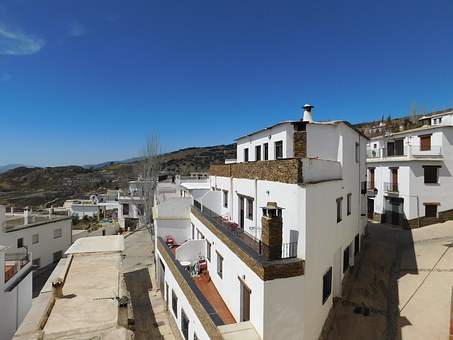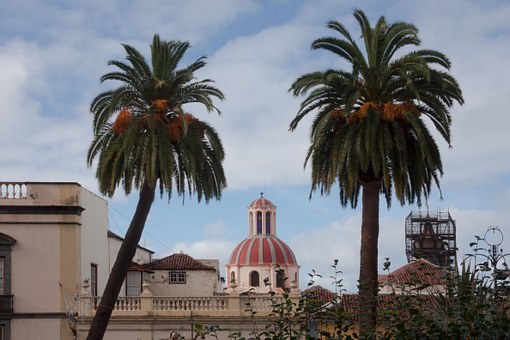Asturias Travel: Pre-Romanesque Art at Santa María del Naranco and La Balesquida - a Big Festival in Oviedo

Asturias Travel: Pre-Romanesque Art at Santa Mara del Naranco and La Balesquida - a Big Festival in Oviedo
After a much needed restful sleep on my arrival day at the Barcelo Oviedo Cervantes Hotel, I woke up early at 7 am and was ready for my first full day in Asturias, a beautiful region in the north of Spain that offers a combination of high mountains and ocean. During the morning I was planning to get to know the capital, Oviedo, in a walking tour with local culture and tourism expert, Liliana Ausn, who had been selected for me by Turismo Asturias.
But before I embarked on my guided tour, I had a quick breakfast in my hotel which featured a large buffet with different types of cheeses, smoked salmon, cold cuts, freshly baked breads, fresh fruit juices and a large assortment of sweets, croissants, muffins, yoghurts and cereals. Then I headed out for a quick walk through downtown on this gorgeous day.
With less than an hour before my scheduled tour, I walked through Oviedo's downtown, through its famous Campo de San Francisco Park and also came across the Mercado del Fontn, the city's municipal market. Further west on the Calle del Marqus de Santa Cruz I stopped to take photographs of some beautiful early 20th century townhouses. Adorned with plasterwork and multi-coloured detailing, these urban row houses were built during a time when Oviedo was experiencing a major industrial and economic growth.

Now I had to hurry up and make my way back to the hotel in order to meet my guide, Liliana Ausn. Liliana is an expert tour guide with a great knowledge of the entire province of Asturias. She is also intricately involved with the Prince of Asturias awards that are given to distinguished winners from around the world in eight different categories, which include arts, social sciences, literature, sports and others.
Liliana and I got into my car and started our driving tour by heading north out of the downtown area towards Mount Naranco. We crossed the busy Avenida del Cantbrico and started to head up into the hills. After a short drive we made our first stop at San Miguel de Lillo, a small Pre-Romanesque church that was consecrated in 848. Asturias is famous for its Pre-Romanesque architecture that mostly includes sacral buildings constructed between 711 and 910, the period of the rise and later disappearance of the Kingdom of Asturias. This simple small country church has been a UNESCO World Heritage Site since 1985.
We started walking down the hill and admired the gorgeous elevated view over Oviedo. Liliana explained that the central mountainous area of this province is called the Spine of Asturias. The hardest stage of the Spanish cycling tour, the Vuelta Ciclista de Espaa, is located here. Liliana also added that the road up the Naranco Mountain is a popular walking route for retirees, which has earned it the humorous nickname "the Cholesterol Route". From my brief experience on Naranco Mountain, I certainly agreed that this would be a beautiful area for walking and hiking.
About 100 metres away from San Miguel de Lillo is the Church of Santa Mara del Naranco..
Formerly a royal palace constructed by King Ramiro I. of Asturias, it was also completed in 848 AD. During the 12th century it was converted from a civil building into a church dedicated to the Virgin Mary and is one of the most beautiful and best preserved precursors of Romanesque architecture which emerged in other areas about two centuries later.
Santa Mara del Naranco is one of Oviedo's most famous sites and this morning there were already several buses full of Spanish tourists here to admire this outstanding example of Pre-Romaneseque art. As is the case with its smaller neighbour, Santa Mara del Naranco was also designated as a UNESCO World Heritage Site. The triple-arch window of this historic structure has become so iconic that it was chosen as the tourism logo of Asturias.
Back in town we stopped at the recently constructed convention centre that was designed by famous Spanish architect Santiago Calatrava. Liliana then directed me to drive into downtown Oviedo and we parked the vehicle in the underground garage next to the Teatro Campoamor. We started strolling down the Calle del Palacio Valds and on one of the side streets we stopped and admired a life-size bronze statue of Woody Allen.
The famous American filmmaker had won the Prince of Asturias Award in 2003 and fell in love with Oviedo. He made a promise to one day come back and shoot a film in Oviedo and did indeed return to film parts of his 2008 romantic comedy Vicky Cristina Barcelona here in Oviedo. The sculpture is indeed life-like; unfortunately some avid souvenir collectors had relieved Woody's sculpture of his trademark glasses.
Our stroll then took us back southeast towards Oviedo's cathedral where celebrations were starting for an important local festival: La Balesquida, also referred to as Martes del Campo (Field Tuesday), celebrates a wealthy 13th century lady of Oviedo, Doa Velasquita Girldez, who made a large donation to the Tailors Guild to help the poor. She also became the patron saint of the tailors. This festival is always celebrated on the first Tuesday after Pentecost and involves a procession from the Balesquida Chapel to the Church of San Tirso, followed by a meal of bolos preaos (literally translated "pregnant buns" - Asturian paprika-flavoured sausage rolls) in the Campo de San Francisco Park.
Multiple bands were getting ready for the procession on the Cathedral Square: from the typical Asturian bagpipers - part of the region's Celtic heritage - to traditional bands playing Spanish pasodoble to Brazilian rhythm sections, dozens of musicians were lined up to participate in the festivities. We followed the bands to San Francisco Park where it seemed the whole town was lined up to watch the festivities. We also watched a round of bolos, the Asturian version of bowling, where the balls are aimed at a grouping of nine pins and tossed through the air. The balls are tossed for quite some distance, and the accuracy of these Asturian bowlers was amazing.
Then Liliana took me back to the cathedral where she explained that the current 14th century cathedral was built on top of a Romanesque church from the 9th century. The cathedral only has one tower because money ran out during construction. Across the cathedral square is a sculpture called La Regenta, representing the main character of a novel by famous writer Leopoldo Alas "Clarn", considered a masterpiece of 19th century Spanish writing.

>
At the end of our tour of Oviedo Liliana took me to a store called Camilo de Blas, the oldest pastry shop in Oviedo. In continuous operation since 1914, this shop sells a variety of Asturian sweets and pastries. One of the most famous is the carbayon, which means "Asturian oak tree". The recipe is typical of Oviedo and contains a mix of egg, ground almonds, brandy or sweet wine and sugar, covered in cinnamon-flavoured syrup.
One of the scenes of Woody Allen's movie "Vickie Cristina Barcelona" was filmed in this iconic store. With its historic store fixtures, an old vintage cash register and its assortment of sweets, liqueurs and wines, this traditional store has been enchanting Oviedo's taste buds for almost 100 years.
After our extensive walking tour of Oviedo, I briefly headed back to my hotel and was going to link up with Liliana later in the afternoon when we were going to reconnect for a tour of Gijn, the largest city of Asturias.
http://www.articlesbase.com/travel-tips-articles/asturias-travel-pre-romanesque-art-at-santa-mara-del-naranco-and-la-balesquida-a-big-festival-in-oviedo-3814234.html Asturias Travel: A Visit to Gijón, the Largest City in Asturias Asturias Travel: A Bicycling Adventure on the Bear Trail Spain Travel – Asturias: Bermiego, an Asturian Mountain Village All Inclusive Adult Trip - Questions You Should Ask Boston Convertible dealer whets buyers appetites for MINI Countryman Simple Guide for London Travel Planning For A Destination Wedding A Christmas Shopping Plan Pet Care during Summer Time Turkey - The country and the culture Enjoy Kerala Tour Packages Why renting a Myrtle Beach condo is the best option? Cairo & Luxor Egypt tours from Marsa Alam by flight, Marsa Alam Tours Daily